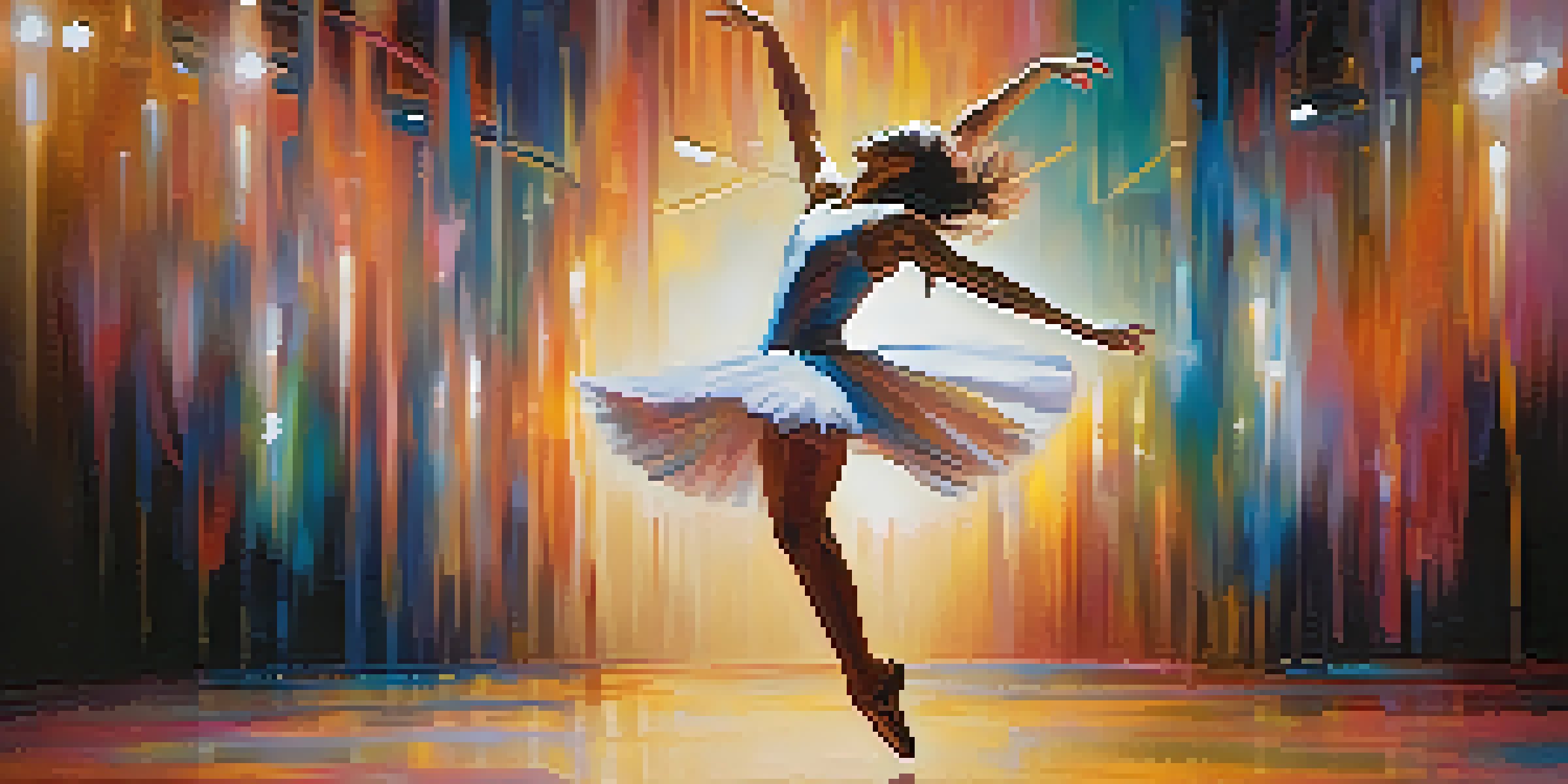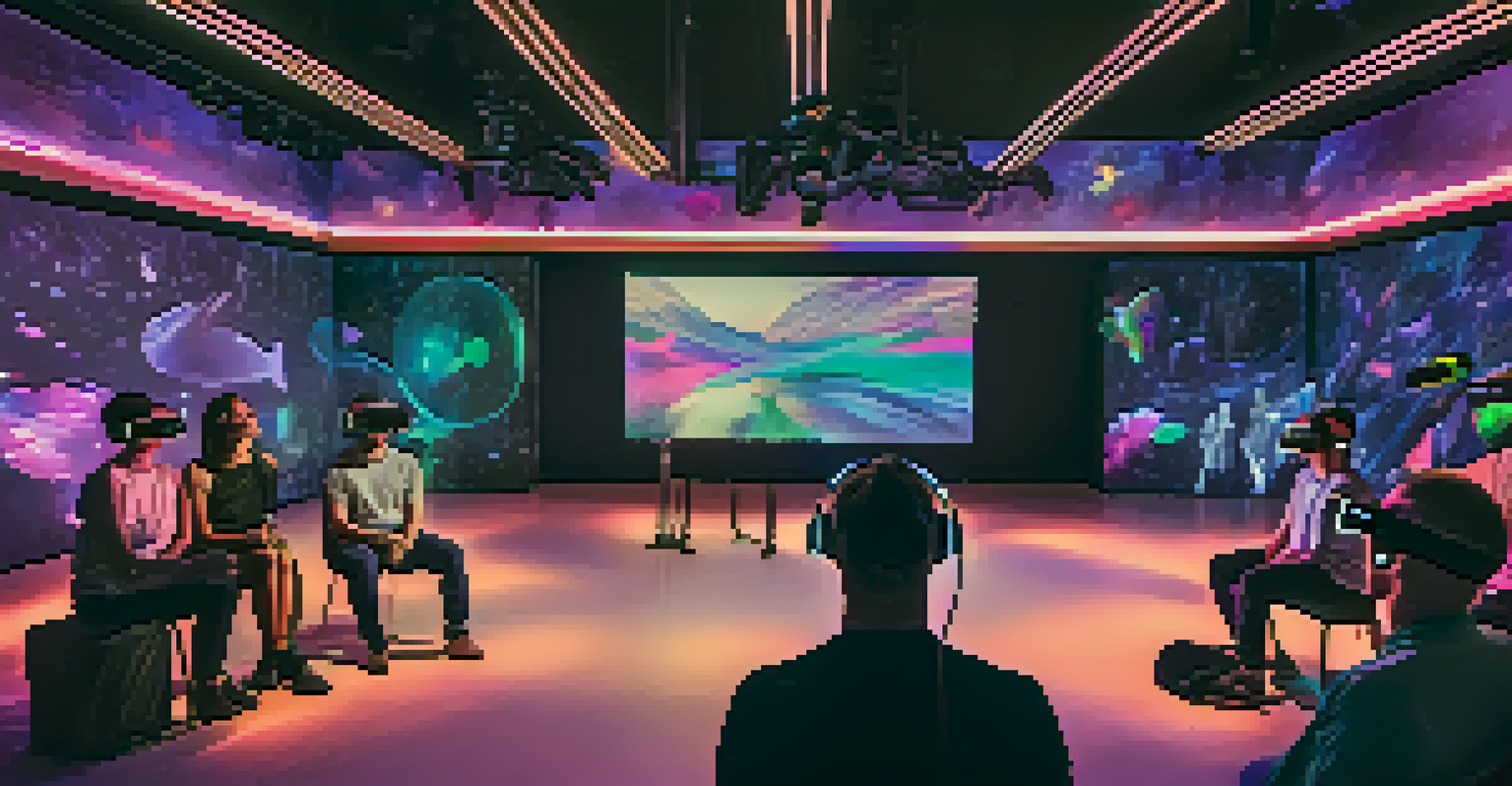Memory and the Art of Performance: A Living Expression

The Connection Between Memory and Performance Art
Memory plays a crucial role in shaping performance art, as it serves as the foundation upon which artists build their narratives. Every movement, gesture, and emotion is often rooted in personal experiences or collective history. This interplay creates a living tapestry that reflects not only the artist's journey but also resonates with the audience's own memories.
Memory is the treasure house of the mind wherein the monuments thereof are kept and preserved.
When performers draw upon their memories, they create a sense of authenticity that connects deeply with viewers. For instance, an actor recalling a moment of joy or sorrow can evoke similar feelings in the audience. This shared emotional experience is what makes performance art so powerful and relatable.
Furthermore, the act of recalling memories becomes part of the performance itself. The artist's ability to navigate their past allows for a dynamic expression that evolves with each performance, making it a unique experience every time.
How Memory Shapes Artistic Expression
Artistic expression is intricately linked to memory, as the experiences we remember influence our creative choices. For many performers, their art becomes a means of processing and exploring their past. Whether through dance, theater, or music, artists often translate their memories into compelling narratives that resonate with audiences.

Consider a dancer who incorporates movements inspired by childhood memories of play. Each step becomes a reflection of those innocent moments, allowing the audience to relive a similar sense of joy. This transformation of memory into motion creates a vivid and immersive experience.
Memory Fuels Performance Art
Memory serves as the foundation for performance art, connecting artists' personal histories with audience experiences.
Moreover, the use of memory in performance can also serve as a form of storytelling. By weaving together different memories, artists can craft powerful narratives that highlight themes of love, loss, and redemption, drawing viewers into their world.
The Role of Memory in Improvisational Performance
Improvisational performance heavily relies on memory, as artists must stay present while recalling techniques and past experiences. In these spontaneous moments, performers draw from their reservoir of memories to create fluid and authentic expressions. This ability to adapt and respond in real-time is what makes improvisation so thrilling.
The past is never dead. It's not even past.
For instance, a jazz musician improvising during a live performance may pull from their vast knowledge of previous songs and styles. Each note played can evoke memories of past performances, allowing for a rich tapestry of sound that feels both familiar and new. This spontaneous creation becomes a living expression of the artist's journey.
In this way, memory serves not only as a guide but also as a canvas for creativity. The unique blend of past experiences and present moments creates a dynamic performance that evolves with every interaction between artist and audience.
Memory Techniques to Enhance Performance
Actors, dancers, and musicians often employ various memory techniques to enhance their performances. Techniques such as visualization, association, and repetition help artists retain lines, choreography, or musical scores effectively. By using these tools, performers can immerse themselves fully in their roles and deliver more impactful presentations.
For example, an actor may visualize a particular scene while rehearsing their lines, creating a mental image that strengthens their recall. This technique helps them connect emotionally to the character, resulting in a more compelling performance. Similarly, dancers often associate specific movements with personal experiences to make the choreography feel more authentic.
Techniques to Enhance Recall
Performers use memory techniques like visualization and association to reinforce their emotional connection to their roles.
Incorporating these memory techniques not only aids in performance but also helps reduce anxiety. When performers feel confident in their ability to recall their material, they can focus more on the emotional delivery, creating a richer experience for both themselves and the audience.
The Audience's Memory and Its Impact on Performance
The relationship between memory and performance is not one-sided; the audience's memories also play a significant role in shaping their experience. Viewers often draw parallels between a performance and their own life experiences, making the art more relatable and impactful. This shared journey fosters a connection that transcends the stage.
For instance, a poignant scene in a play may remind an audience member of a personal loss, allowing them to process their emotions in a safe space. This interaction between the performer and the audience's memories enriches the overall experience, creating a dialogue that continues long after the performance concludes.
Moreover, when audiences engage with performances through the lens of their memories, they contribute to the artwork's meaning. The unique perspectives brought by each viewer can transform a performance, making it a collaborative experience that showcases the power of collective memory.
Cultural Memory and Collective Performance
Cultural memory significantly influences performance art, as it encompasses shared experiences and histories within a community. Performers often draw from cultural narratives, integrating traditional elements into their work to honor their heritage. This practice not only preserves history but also keeps it alive, allowing future generations to connect with their roots.
For example, a traditional dance performance may incorporate movements and stories passed down through generations, creating a living expression of cultural identity. This type of performance serves as a reminder of where we come from and the values we hold dear, fostering pride and unity.
Cultural Memory Enriches Art
Cultural memory influences performance by incorporating shared histories and narratives, fostering community and identity.
In this way, cultural memory shapes the performance landscape, inviting audiences to engage with their heritage while celebrating diversity. The blending of personal and cultural memories creates a vibrant tapestry that enriches artistic expression.
The Future of Memory in Performance Art
As technology continues to evolve, new ways of exploring memory in performance art are emerging. Virtual reality and multimedia installations offer innovative platforms for artists to experiment with memory, allowing them to create immersive experiences that challenge traditional boundaries. These advancements open up exciting possibilities for storytelling and expression.
For instance, artists can now create interactive performances that allow audiences to engage with memories in real-time. By incorporating elements like augmented reality, viewers can experience the performance from multiple perspectives, deepening their connection with the art. This evolution not only enhances the viewer's experience but also enriches the artist's expression.

Looking ahead, the relationship between memory and performance will likely continue to evolve, adapting to societal changes and technological advancements. As artists explore these new dimensions, they will undoubtedly uncover fresh ways to express the living essence of memory in their work.